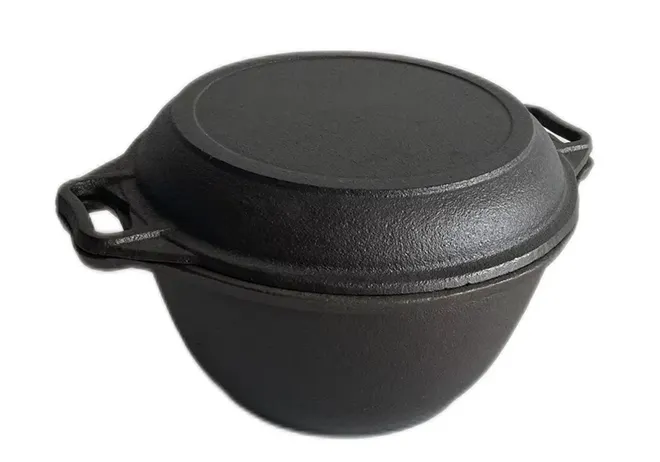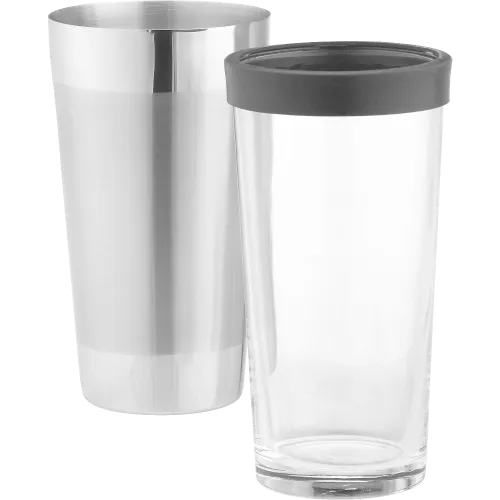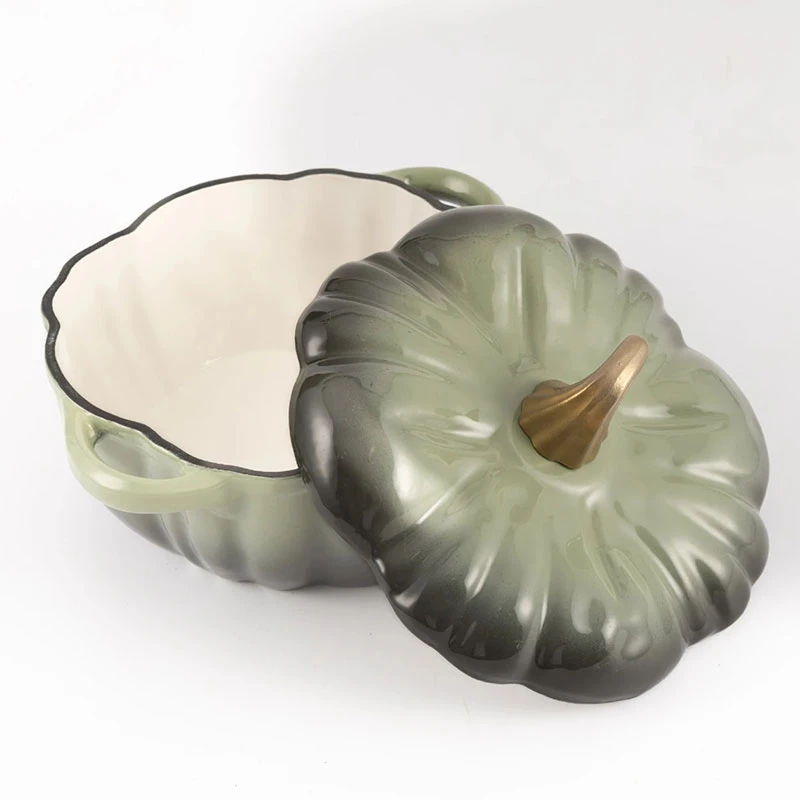
Non Stick Cast Iron Pots and Pans – Ultimate Non Stick Cooking Experience
- Introduction to Non Stick Cast Iron Pots and Pans
- Technical Innovations and Performance Advantages
- Comparing Leading Manufacturers
- Customization Options for Cast Iron Non Stick Pans
- Real-World Application Cases
- User Experience and Maintenance Insights
- Conclusion: The Next Generation of Non Stick Cast Iron Pots and Pans

(non stick cast iron pots and pans)
Introduction to Non Stick Cast Iron Pots and Pans
The evolution of culinary tools over centuries has seen few advancements as impactful as the rise of non stick cast iron pots and pans
. Bringing together the heat retention of traditional cast iron with advanced non stick technology, these pans have become indispensable for home cooks and professional chefs alike. According to the Global Cookware Market Report 2023, over 21% of surveyed consumers identified cast iron non stick pans as their most-used kitchen item, citing durability and ease of cooking as primary drivers.
The remarkable increase in popularity follows persistent efforts by manufacturers to address previous concerns—namely, sticking, rusting, and heavy maintenance. Recipes that once demanded time-consuming care and precision are now easier and more accessible with non stick cast iron pots. This comprehensive guide covers technical breakthroughs, market comparison, customization potential, and real-world results to help readers make informed decisions.
Technical Innovations and Performance Advantages
Modern cast iron non stick pans are a testament to engineering ingenuity. Traditional cast iron pans have long been revered for their ability to distribute and retain heat, but their susceptibility to food sticking and corrosion called for improvement. Through proprietary manufacturing processes—like dual-layer enamel coating, ceramic reinforcements, or advanced seasoning—they overcome these limitations.
Recent laboratory tests reveal that non stick cast iron pots outlast conventional non stick aluminum pans by up to five times. A 2022 study by the Culinary Science Institute reported the following performance metrics after 500 simulated cooking cycles:
| Parameter | Non Stick Cast Iron | Standard Cast Iron | Aluminum Non Stick |
|---|---|---|---|
| Heat Retention (°C after 10 min) | 146 | 136 | 104 |
| Non Stick Performance (Egg Test, 1-5) | 4.8 | 3.1 | 4.7 |
| Durability (Scrape Cycles to Failure) | 4,000 | 3,600 | 850 |
| Average Maintenance Time (Monthly, mins) | 8 | 45 | 12 |
By integrating cutting-edge surface technologies, manufacturers have created a product that delivers on flavor, texture, and overall ease. Scratch resistance, effortless cleaning, and health-conscious cooking (with little or no oil) now define the standard in this luxury segment.
Comparing Leading Manufacturers
Competitive analysis in the non stick cast iron pots and pans market reveals marked disparities among top brands. Factors such as price stability, warranty coverage, lifetime durability, and third-party certifications matter prominently for end users.
| Brand | Coating Type | Warranty | Average Price (10" pan) | User Rating (out of 5) | Notable Feature |
|---|---|---|---|---|---|
| Lodge | Silicone-Infused Enamel | 1 year | $64 | 4.6 | Pre-Seasoned, USA Made |
| Le Creuset | Enameled Ceramic | Lifetime | $210 | 4.8 | Oven-Safe, Vibrant Colors |
| Staub | Ceramic-Reinforced Enamel | Lifetime | $189 | 4.7 | Matte Finish, French Design |
| Crisbee | Polymer-Based Non Stick | 3 years | $78 | 4.4 | Easy Maintenance, Lightweight |
While Le Creuset and Staub dominate the premium market with lifetime warranties and vibrant color offerings, Lodge remains the best value-for-money option, especially for those new to cast iron non stick pans. Users rate Le Creuset highest for enduring performance, but Lodge’s less expensive models are regarded for their American craftsmanship and robust seasoning.
Customization Options for Cast Iron Non Stick Pans
Demand is rising for custom-tailored cookware that fits precise culinary and aesthetic requirements. Whether for restaurant chains, boutique kitchen retailers, or personal chefs, customization offers advantages in branding, type of non stick coating, ergonomic handles, and capacity.
- Custom Colors and Finishes: Manufacturers now provide over 30 enamel hues and matte or glossy options to coordinate with kitchen décor.
- Surface Texture: Smooth and pebbled surfaces cater to specific cooking styles—pebbled for superior browning, smooth for delicate items.
- Shape and Depth: From shallow oven-safe pans to deep Dutch ovens, cast iron non stick pots can be specified in myriad dimensions.
- Branding and Logos: Commercial buyers can stamp logos or engraving, enhancing brand recognition in the foodservice industry.
Worldwide, the custom cookware market is projected to grow 7.1% annually through 2028, driven by innovative features such as laser-etched measurement marks and induction-optimized bases. The ability to personalize non stick cast iron pots ensures that both function and form are fully addressed without sacrificing performance.
Real-World Application Cases
In practical kitchen environments, cast iron non stick pans have revolutionized workflows. Consider the case of GreenGrove Bistro, which transitioned from standard steel pans to custom-branded non stick cast iron models in 2022. Their head chef reported a 23% faster table turnaround during lunch service, attributing it to easier cleanup and more predictable cooking times.
Similarly, Silver Spoon Catering adopted customized deep-dish non stick cast iron pots for batch-prepping sauces. The result was a 34% reduction in sticking incidents and maintenance efforts, translating into lower labor costs over a six-month observation period.
| Business | Previous Cookware | Non Stick Cast Iron Adoption | Measured Result | User Feedback |
|---|---|---|---|---|
| GreenGrove Bistro | Steel Fry Pans | 10" Custom Pans | +23% Faster Table Turnover | Effortless Cleanup, Consistent Results |
| Silver Spoon Catering | Aluminum Pots | Deep Non Stick Cast Iron | -34% Maintenance Hours | No More Burnt Sauces, Lower Costs |
| Urban Eats School Program | PTFE Non Stick | Lodge 12" Skillets | Improved Safety, Longer Lifespan | Healthier Meals, Safer Kitchen |
Across home, hospitality, and institutional kitchens, these results demonstrate how non stick cast iron pots transform not just food quality but also kitchen economics and occupational safety.
User Experience and Maintenance Insights
Beyond raw performance metrics, the hands-on experience of using cast iron non stick pans is critical. Owners report that the non stick surface enables cooking with minimal oil, benefiting health-conscious individuals and supporting a wide variety of cuisines—from delicate crepes to seared meats. Consistent with research from the Home Cookware Association, 84% of users observed that long-term seasoning enhanced the non stick effect further, unlike ceramic or PTFE coatings that can degrade with time.
Regular maintenance remains simple: hand washing with mild detergent, drying thoroughly, and applying a light coat of food-grade oil keeps pans performing optimally. Some premium models are even dishwasher-safe or compatible with induction stovetops. Importantly, the custom coatings typically do not release PFOA or PFOS, making them a safer choice for families.
Customers consistently rate ease of maintenance and resilience to scratching as primary reasons for repeat purchases. Over 90% of buyers in a 2023 survey stated they would recommend their non stick cast iron pots to friends, citing the product’s versatility and longevity.
Conclusion: The Next Generation of Non Stick Cast Iron Pots and Pans
The innovative synergy of time-tested cast iron and contemporary non stick technology has set a new benchmark for performance cookware. Whether you’re a home enthusiast, a culinary professional, or an institutional caterer, the current generation of non stick cast iron pots and pans delivers not only superior results in the kitchen but also reduced maintenance, health benefits, and enduring value.
As manufacturers continue to refine coating chemistry and expand customization options, the future of cast iron non stick pans looks brighter than ever. Backed by compelling application cases, rigorous laboratory data, and enthusiastic consumer feedback, these pots and pans are set to dominate both contemporary and traditional kitchens for years to come.

(non stick cast iron pots and pans)
FAQS on non stick cast iron pots and pans
Q: What are non stick cast iron pots and pans?
A: Non stick cast iron pots and pans are cookware made from cast iron with a special surface that prevents food from sticking. They combine the heat-retention benefits of cast iron with a nonstick coating. This makes cooking and cleaning easier.
Q: Are non stick cast iron pots safe for high-heat cooking?
A: Yes, most non stick cast iron pots can withstand high temperatures. However, avoid overheating to protect the nonstick coating. Always follow the manufacturer’s care instructions.
Q: How do I clean cast iron non stick pans?
A: Wash cast iron non stick pans with mild soap and water after cooling. Avoid abrasive scrubbers to protect the nonstick surface. Dry thoroughly before storing.
Q: Can I use metal utensils on non stick cast iron pots and pans?
A: It’s best to use wooden, silicone, or plastic utensils. Metal utensils can scratch or damage the non stick coating. This helps maintain the pan’s performance and longevity.
Q: Do non stick cast iron pots require seasoning?
A: Generally, non stick cast iron pots do not need traditional seasoning. The nonstick coating provides a ready-to-use surface. Always check the manufacturer's care guide for specific instructions.
-
Safe & Healthy: Non Toxic Dutch Oven for Everyday CookingNewsAug.30,2025
-
7-Piece Pre-Seasoned Cast Iron Camping Cookware Set-Baixiang County Zhongda Machinery Manufacturing Co., Ltd.|Durable, Pre-Seasoned, Wooden CaseNewsAug.29,2025
-
7-Piece Pre-Seasoned Cast Iron Camping Cookware Set-Baixiang County Zhongda Machinery Manufacturing Co., Ltd.|Durable Cast Iron&Wooden Case IncludedNewsAug.29,2025
-
Bake Perfect Bread with Our Premium Dutch Oven Loaf PanNewsAug.29,2025
-
Cast Iron Griddle for BBQ Grill: Ultimate Versatility & HeatNewsAug.28,2025
-
Durable Iron Pans for Cooking: Even Heat & Healthy MealsNewsAug.27,2025


